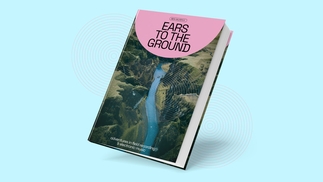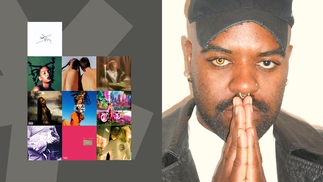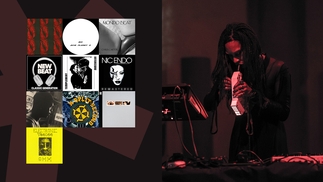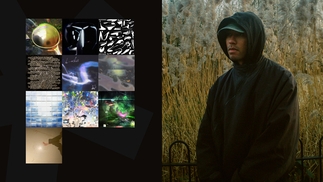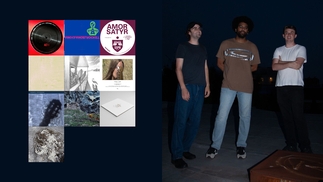Podcast 114: Ian William Craig

Composer, vocalist and tape manipulator Ian William Craig delivers a spellbinding mix of melancholic, melodic and minimal atmospheres with sprawling strings and songs – one for “drinking tea and going for walks”. We catch up with him to discuss his new release, ‘Thresholder’, printmaking, cassettes and noise...
Few contemporary ambient artists can capture melancholy quite like Ian William Craig. Using tape loops, electronics and organic instrumentation to accompany his distinctly gossamer-light and classically trained singing, the Vancouver composer stands among the likes of Grouper, Julianna Barwick and William Doyle as an artist for whom the human voice is an essential instrument in the ambient orchestra. Layers upon layers of – often wordless – vocals flutter among melodic swells and captivating noise, simultaneously rich and weightless as he holds his own fragility up to the light for all to witness and share in.
The emotive heft of his compositions – spread over roughly a dozen LPs, EPs and singles – makes for vivid and unforgettable listening, full of rich colour and tangible textures. It comes as no surprise to learn then that Craig’s background was in printmaking and visual work, something that is represented in the artwork for albums like 2014’s radiant and heart wrenching ‘A Turn Of Breath’ or 2016’s stark and chilling ‘Centres’.
The cover art for ‘Thresholder’, released in November this year via Fat Cat sub-label 130701 Records, is equally apt. A carefully placed assembly of detritus – some pebbles, gizmos and rusted mechanisms – rest on a black background, echoing the album’s origins as a scrap book or collection of gathered vignettes. Stitched together from previously unreleased motifs, ideas and tracks and woven through a foundation of muffled soundscapes and distortion, ‘Thresholder’ feels like a cathartic work for Craig, despite its self-confessed “unromantic” nascence. In a year that saw him fall in love, spend time with family, experience loss and seek to realign his own routine, it feels significant that 2018 would be the year that found him clear out the creative attic. The result, of course, is an absorbing and natural tapestry that finds an artist reflecting on his past while gazing, amidst the melancholy, hopefully toward the future.
For his DJ Mag Podcast mix Craig serves up an hour of gentle and engulfing sounds, veering from ambience, shoegaze and noise to solo strings and a bit of Mitski for good measure. Check it out, along with an in-depth Q&A, below.
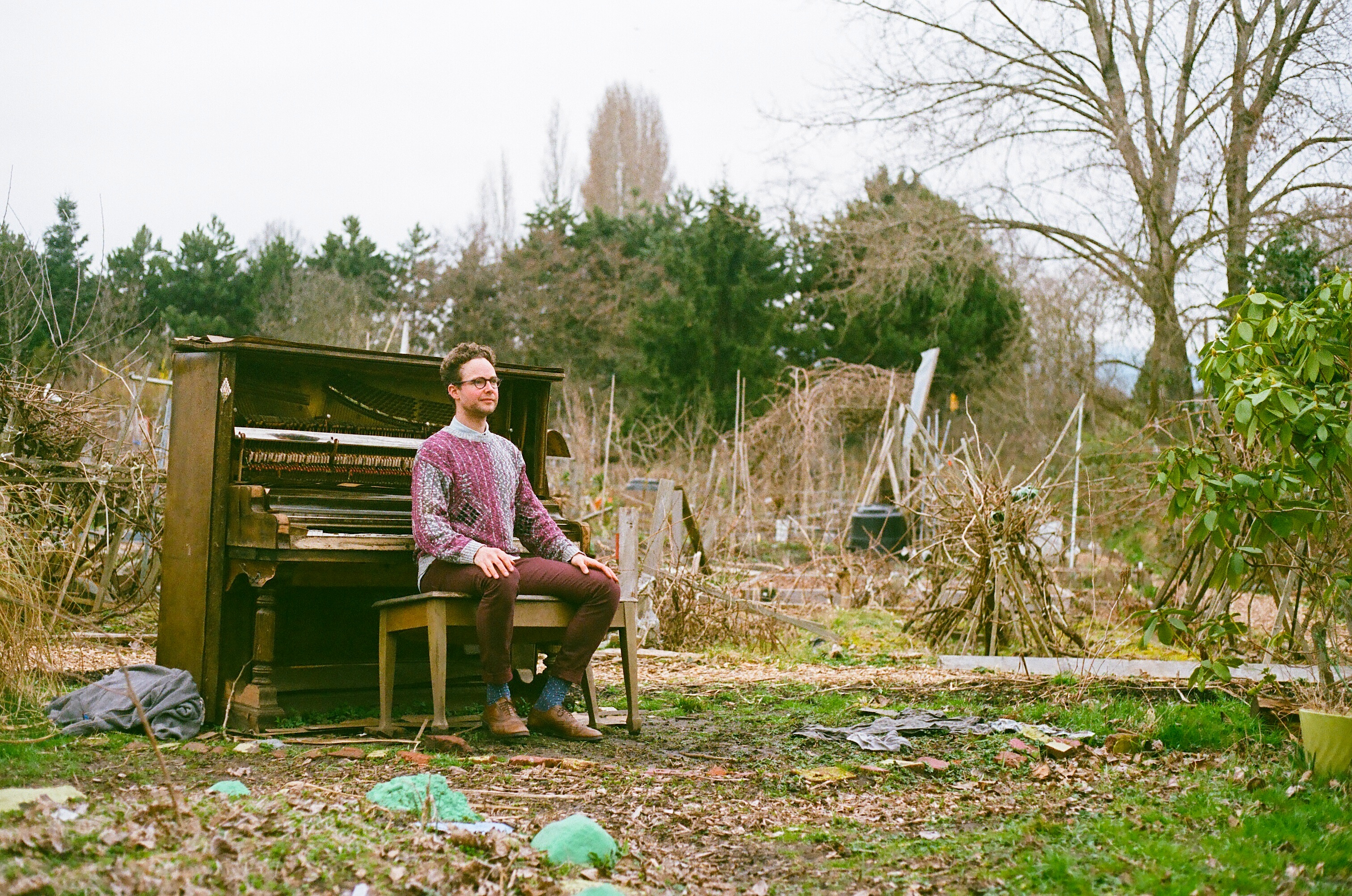
Hi Ian. How are you doing? How has 2018 been? What have been the most significant things to happen for you this year?
“Hello in kind! I am good, I hope this finds you good too. It has indeed been a year. I decided to try catching up to myself adult-style, and concentrated on making space in which to be a more sustainable human. Long runs and healthy food and composting and reasonable hours to bed. In a funny way, taking time out to do those things made the year startlingly full and productive, and allowed me to be with the way things decided to move as opposed to being swept up in them. This was striking. As a result, I made four records with various projects, spent time with my parents while my last grandparent passed away, and fell in love. Human things.”
'Thresholder' was in part compiled of various unreleased pieces and commissioned work, woven together on the background of machine loops and equipment sounds. Can you tell us more about what made you want to assemble these tracks this way?
“I hate to chalk it up to this, but it was assembled out of sheer necessity. I suppose I only hate to attribute it this way because it seems so unromantic, but really deadlines and assignments (so to speak) have been probably the two biggest motivators for finishing things in my practice, so maybe I'm just being honest this time. But pragmatism, indeed: this stuff happened to be the material I had around when my label requested an interim EP between releases. To make it interesting for me, I decided to try and use the pieces themselves as an instrument, to see if I could play them like I would a voice or a space. If the closet must be cleaned we should endeavour at least to make it engaging.”
‘Thresholder’ was “inspired by concepts of quantum physics, black holes and space". Can you elaborate on that idea and how you executed it?
“Magnetic tape is one of the most generous things humans have invented, and I find it electrifying how it exploits such a simple and majestic property of the universe to build entire worlds of sound. The smallest of particles all working in concert to unfold the hidden poetry embedded in the space we find ourselves in. That's probably a bit over the top, but tape is nevertheless magic in the same way the physical universe is. More practically speaking, these big ideas of the universe were a helpful aesthetic mechanism to try and get all of the pieces to weave together. I tried to unfold them into space in the mixing and production process. More or less I wanted to have the whole record be like the end of the first Star Trek movie where they're basically just staring out the window while helplessly and slowly drifting through the awe-inspiring unknown for 40 minutes, but more like I wanted to feel that way myself while making it.”
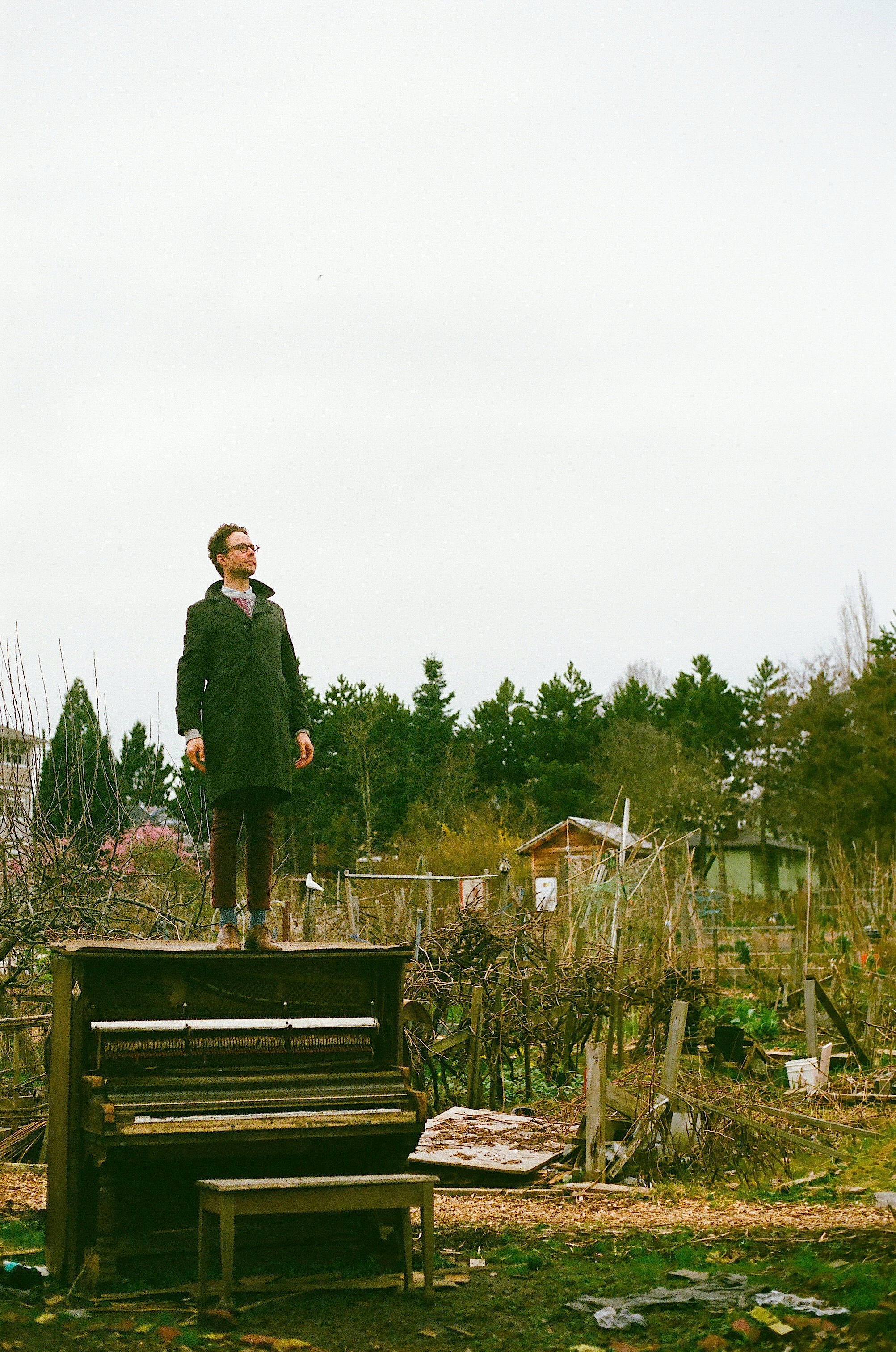
Your use of tape loops throughout your catalog has always invoked the poignancy and William Basinski’s ‘Disintegration Loops’ and the capturing of “real time” and distinctly momentary sounds. Was he a direct reference point when you started to compose the way you do now? Can you explain what drew you to tape initially?
“I spent most of my 20's immersed in printmaking, which can be an extremely tactile and aleatoric medium. There is nothing that can make it go faster than it inherently does; there is a great deal of conversation materially, procedurally and temporally that you have to commit to with the medium itself. Every print made is an elaborate dance between artist, plate and process. Once I rediscovered my love of music after grad school and decided to make some, I found I craved this dialogue there as well. Basinski's work was a beacon in this regard as I could hear all of the above working together in the sound of his pieces.
“Analogue tape is a place where I can continue the printmakerly dance in a sonic way, and have the surface, space and story of a composition celebrated at once without them contradicting one another. Though I think Basinski is altogether more patient than I am, which I admire – I needed to resort to building instant disintegration loop machines, whereas he allows the real thing to occur.”
Given the sense of reflection that must come with assembling old compositions and ideas on an album like this, have you observed any notable changes in your compositional style between now and when you started out? How do you feel you have evolved?
“Listening back to these pieces, I'm struck at how often I used to layering as a way to complete things. My compositional strategies were more additive, making things thicker and thicker until a piece came out like a fever breaking. I think now I find removal more useful. My relationship to noise has changed a great deal in this regard: as opposed to treating it as an armature which is there to hold further structure, I see it as a whole from which hidden things can be revealed by making space for them. It's more archeological, and ultimately more rewarding since it's all more or less laid out for you. I think Pauline Oliveros was entirely spot on here, and this switch has caused me to listen more, and by extension fall in love with sound all over again.”
Your visual work has always appeared as the perfect companion to your sound. What thematic or stylistic similarities do you feel exist between the two forms? Is the fusing of the two in a live something you are keen to explore more in future?
“I confess enjoying coming at things from a conceptual place, mostly because it scratches compulsions developed in art school, but I think I really just deeply love texture. Things that have been subject to time have a beauty to them that only time can provide. I get some deep creaturely joy from looking at rusted surfaces or the backs of the woodblock plates my students discard for example. Perhaps I want things to sound this way too. I haven't yet found a satisfying way to fuse my visual work with my compositional practice outside of album art without resorting to projections during a live set – it usually just seems distracting or ornamental. But I would love for something more explicitly visual to emerge as a result of what I do with the machines, or to extract some visual information from them somehow.”
For someone’s whose work is rooted in tape, it’s interesting that you haven’t yet released anything on tape yourself (or am I totally mistaken?). Given the resurgence of labels and artists now releasing on tape, is it something you’d be interested in? Have you any thoughts on the resurfacing popularity of cassettes?
“In fact, I have released two – two! – albums on tape, even once trying my hand at being a cassette label. Said label was short-lived as I found rather quickly I don't have the stomach for promotion, but I managed to get at least something out. I later released Zugzwang for Fostex on Patient Sounds, which label is a super rad one from Chicago. I just bought a beautiful mastering deck and a tape duplicator, so I have pipe dreams of firing some kind of cassette-based thing up again, like a subscription series or suchlike.
“But time and the lack thereof and all. I am biased (no pun intended) but I think cassettes are pretty much the perfect medium for distributing music: compact, more or less CD quality these days if you know what you're doing, unrestricted by length, relatively random-access, analogue, durable, physical, easy to duplicate and manipulate. Records are perhaps cooler, but they're unwieldy in all regards except this, and streaming is perhaps more convenient, but it smells funny and is terrible, so really nothing beats tapes. No surprise they're still around.”
What plans have you got for 2019?
“Many seeds planted this year will be ready to harvest the next, but mostly these are secrets and I'm pretty stoked on being in love so I'm going to roll with that.”
Tell us about this mix! What was your thinking behind it? What should we do while listening to it?
“The only caveat that I was given was to make an ambient mix, and so I tried to tie some different interpretations of what that might be together. I like what Brian Eno said about the best of ambient being able to function equally well while being listened to or not listened to, and these pieces all do that for me, so I'll not predispose the listener to any particular activity here. Let them do or not do at will. But things I have done while listening to this mix mostly comprise drinking tea and going for walks, which I would always say is a good start for listening to anything.”
Anything else we should know?
“If the Oilers had a different GM we'd have a decent shot at the cup.”
Tracklist:
Driving | Grouper | Grid of Points
Ruined World | Dino Spiluttini | No Horizon
After the End | Those Who Walk Away | The Infected Mass
Alpha Yellow Day Star | Lee Noble | Ashenden
With the Birds | Ekin Fil | Ghosts Inside
Radian | Kelly Moran | Ultraviolet
Two Shadows | Secret Pyramid | Two Shadows Collide
Mesa | Hans Zimmer & Benjamin Wallfisch | Blade Runner 2049 OST
Stone Ilex | Sean McCann | Fountains (Expanded Edition)
Sonata for Solo Viola: I. Hora Lunga | Susanne Van Els | Ligeti: Lux Aeterna
Song for an Unborn Sun | Midwife | Like Author, Like Daughter
In Summer | Jefre Cantu-Ledesma | In Summer - EP
loosing everything | 아버지 | reflection
To Cross Great Rivers | Ipek Gorgun | Ecce Homo
Love and Death | C. Diab | Exit Rumination
Last Words of a Shooting Star | Mitski | Bury Me At Makeout Creek
